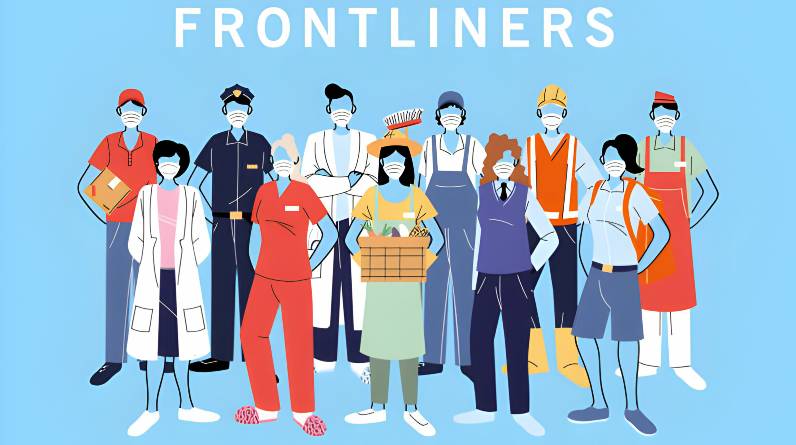
Safety at work is an important topic that affects everyone in the workplace. Whether you are an employee or an employer, it is important to understand the risks involved in your job and take steps to lessen them.
This article will provide you with the information you need to know about safety at work and how to ensure a safe work environment.
What is Safety at Work?
Safety at work is the practice of ensuring the protection of employees from harm while they are on the job. This includes protection from physical harm like injuries from accidents or hazardous materials.
This also includes psychological harm, such as stress and burnout. Safety at work is a shared responsibility between employers and employees. And, it also requires cooperation and communication to be effective.
Employer Responsibilities
Employers have a legal and moral obligation to provide a safe work environment for their employees. This obligation includes identifying and assessing the risks involved in their jobs. And, it also includes the steps needed so that they can lessen those risks.
Employers should provide appropriate training and protective equipment to their employees. And, they should ensure that their employees are aware of the potential hazards in their workplace. One way that employers can promote safety at work is by establishing a safety program.
A safety program is a comprehensive plan that outlines the procedures and policies that are in place to protect employees from harm. This program should include hazard identification, risk assessment, training, and emergency response procedures.
Employers should also review and update their safety programs as often as possible. This is to help ensure that it remains effective.
Hazard Identification
The first step in promoting safety at work is identifying the hazards that exist in the workplace. Employers should conduct a thorough assessment of their workplace to identify potential hazards.
Hazards can include physical hazards such as machinery and equipment. This can also environmental hazards as well. Examples include possible exposure to chemicals or extreme temperatures.
Risk Assessment
Once hazard identification is complete, employers should conduct a risk assessment. This can help them determine the likelihood and severity of potential injuries or illnesses.
This can help employers to place importance on their efforts to cut down on risks and put appropriate control measures in place.
Safety Training
Training is an essential component of promoting safety at work. Employers should provide their employees with appropriate training on safety procedures and guidelines.
This can include training on the proper use of the equipment and handling hazardous materials. Safety training also includes emergency response procedures.
The Use of Protective Equipment
Protective equipment, such as helmets, gloves, and safety glasses should always be available. These can help lessen the risk of accidents and exposure to hazardous materials.
Employers should provide the right personal protective equipment to their employees. And, they should also ensure that these are of good quality, and are working the right way.
Emergency Response Procedures
Employers should establish solid emergency response procedures. This is to ensure that employees know what to do in the event of an emergency. This can include procedures for evacuating the workplace.
It also includes workplace first aid kit placement and administering it when needed. Another is also the process of contacting emergency services.
Employee Responsibilities
Employees also have a responsibility to ensure their own safety at work. This includes following all safety procedures and guidelines and wearing appropriate protective equipment.
Reporting any hazards or unsafe conditions to their employer are also a must. Employees should also take part in safety training programs. And, they should not hesitate to seek help if they are experiencing stress or burnout.
Creating a Culture of Safety
Creating a culture of safety is essential for promoting safety at work. This means that safety should be a priority for everyone in the workplace. This ranges from the top-level management all the way to the front-line employees.
Having an open line of communication can help build a culture of safety. Providing opportunities for feedback, and recognizing and rewarding safe behavior are also contributors.
Safety Committees
One way to encourage a culture of safety is by establishing a safety committee. A safety committee is a group of employees who are responsible for promoting safety in the workplace.
The committee should include representatives from all levels of the organization. Its main role should be to identify hazards as often as it can and develop solutions to lessen risks.
Promoting Workplace Safety Tips
Now, you know what are the things needed to have a safer workplace. Here are a few tips for you to be able to better promote safety at work.
Encourage Open Communication
Employees should feel comfortable reporting hazards or unsafe conditions to their employers. Employers should establish a system for reporting hazards and ensure that employees are aware of how to report them.
Provide Appropriate Resources
Employers should provide appropriate resources to their employees. These resources include safety equipment and the necessary training sessions. Having both of these can help promote a culture of safety in the workplace.
Hold Regular Safety Meetings
Employers should hold regular safety meetings to discuss safety concerns. And, this can also be an avenue to provide updates on safety procedures and guidelines.
Recognize and Reward Safe Behavior
Employers should recognize and reward employees who are able to practice safe behavior. This can help encourage a culture of safety in the workplace.
Maintaining Safety at Work
Safety at work is a shared responsibility between employers and employees. Employers have a legal and moral obligation to maintain employee safety at all times. And, employees have a responsibility to ensure their safety by following safety procedures.
Since this is a two-way street, both employees and employers need to always do their part. This is what makes communication and compliance very important. So, follow the tips outlined in this article.
That way, you can help ensure a safe and healthy work environment. Remember, safety always comes first. So, make sure you practice these to stay safe at all times.
For more tips and guides, visit our blog today!






